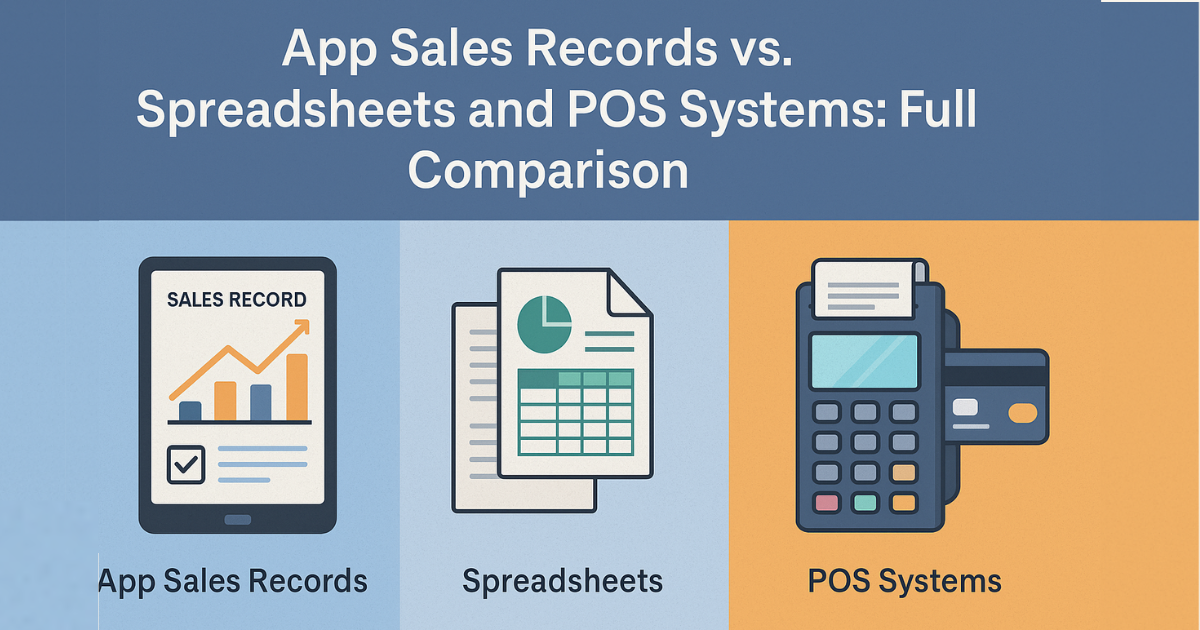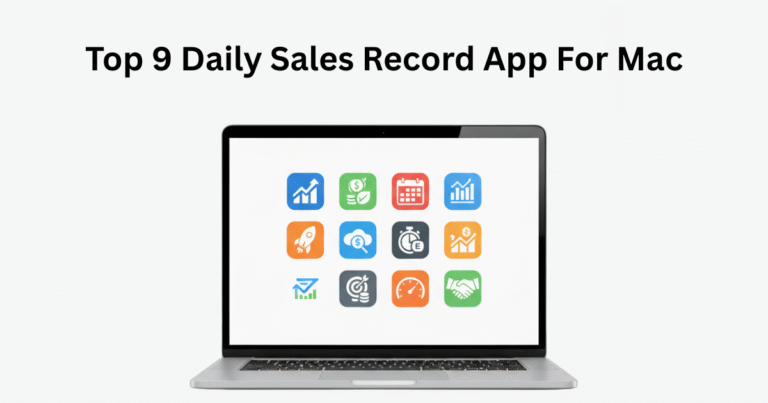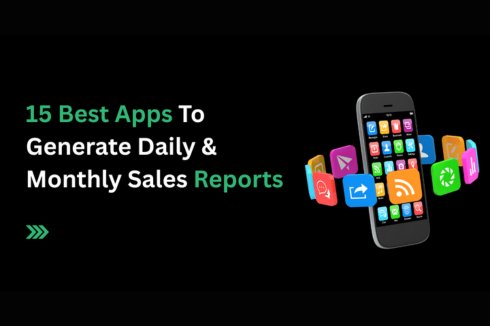App Sales Records vs. Spreadsheets and POS Systems: Full Comparison
Did you know that about 68% of retailers face losses using manual tracking reports? That’s why the right tracking system is crucial. Now, the question is, App Sales Records vs. Spreadsheets and POS Systems, which is the right choice for you?
Spreadsheets are popular, easier and a free option. You can start using one even right now, but they require constant manual updates. And more manual updates mean more possible errors. POS systems save your time, provide real-time data, and are easy to update. But they come with higher costs (initial setup fees ranging from $1,000 to $5,000) and maintenance fees. On the other hand, App Sales Records covers the gap between them. They are automated, cloud-based, easy to use, and affordable.
In this guide, we’ll dive deeper into each solution to help you decide which one is right for your business. Whether you need something simple, cost-effective, or feature-rich, understanding these tools will give you the insights to make the best choice for tracking your sales.
Why Your Sales Tracking Method Impacts Profit
How you track sales can make a big difference in your profit. If you’re using the right tool, it saves you time, reduces mistakes, and helps you make smarter decisions. Accurate data lets you manage inventory better, reorder stock when needed, and even spot trends that can increase your sales.
The best part? Automated tools like sales apps or POS systems take the burden off your shoulders. They help you focus on growing your business instead of getting lost in spreadsheets. As your business grows, these tools grow with you, making sure everything stays organized and profitable. Simply put, the right sales tracking method can help your business run more efficiently and increase your profits.
Spreadsheets for Sales Tracking: Prone to Errors
Spreadsheets can be tempting for tracking sales, but they come with a lot of hidden problems. For one, they take up a lot of time. Small businesses spend about 5 hours per week just entering data. As your business grows, that time commitment only increases, taking you away from more important tasks.
Spreadsheets are also prone to mistakes. Even the best-laid plans can get thrown off by a typo or wrong formula. In fact, 87% of spreadsheet users encounter errors, and those small mistakes can lead to big costs.
Another major downside is that spreadsheets don’t update in real time. This means your data could already be outdated, especially when managing inventory. Inventory mistakes cost businesses $1.75 trillion a year.
Lastly, scaling becomes difficult. Spreadsheets might work at first, but 70% of businesses outgrow them in about five years. Plus, sharing them with a team can lead to confusion and errors, with 41% of businesses reporting problems with collaboration.
POS System Features: What You Need to Know
POS systems automatically track sales and update inventory in real time, cutting down on errors. Businesses can save up to 15 hours per week with this automation. Real-time data allows for quick, informed decisions, and 45% of businesses using POS systems report improved efficiency and better decision-making.
The downside is the high initial cost, with hardware expenses ranging from $1,000 to $3,000 and monthly software fees between $50 to $150.
POS systems rely on the internet or cloud, so 62% of businesses experience occasional downtime, which can disrupt sales. However, they offer robust security features like encryption and fraud detection, helping protect sensitive data. With data breaches costing $3.86 million on average, these security measures are vital.
Sales Tracking Apps: The Modern Solution
Sales tracking apps are a game-changer for your business. They’re designed to be easy to use, even if you don’t have much tech experience. Setting up is quick, and the interface is simple, so you can start tracking your sales right away.
Since these apps are cloud-based, you can access your data anytime, from any device, whether you’re in the office, at home, or on the go. Real-time updates make sure your sales and inventory data are always accurate, so you can make fast, informed decisions.
They also offer customizable reports to help you analyze your sales trends, track performance, and understand customer behavior. And the best part? These apps are affordable, typically costing between $10 to $50 per month (depending on the features), which is much cheaper than traditional POS systems.
Your data is securely stored in the cloud, so you don’t have to worry about losing anything. Easy to use, secure, and cost-effective. Sales tracking apps make running your business a breeze.
App Sales Records vs. Spreadsheets and POS Systems: Side-by-Side Comparison
Choosing the right tool to track your sales is essential for running a smooth business. Here’s a side-by-side comparison of App Sales Records, Spreadsheets, and POS Systems to help you determine which solution fits your needs.
| Feature | App Sales Records | Spreadsheets | POS Systems |
| Ease of Use | Very easy to set up and use for any business | Requires manual data entry and advanced knowledge | Simple for retail staff, but needs training |
| Cost | Affordable, typically $10 to $50/month | Free (Google Sheets/Excel) or low-cost | High initial cost, $1,000 to $5,000 for hardware, plus ongoing fees ($50-$200/month) |
| Real-Time Updates | Yes, automatically updates sales and inventory | No, must be updated manually | Yes, updates sales and inventory instantly |
| Automation | High, automates reporting, invoicing, and stock updates | Low, requires manual work for updates | High, automates everything from sales to inventory |
| Scalability | Can scale with business growth | Limited, becomes unwieldy as data grows | Highly scalable, perfect for multi-location businesses |
| Security | High, cloud-based storage with encryption | Low, depends on manual backup and storage | High, secure payments and data encryption |
| Customization | Limited customization for basic needs | Fully customizable with formulas, but complex | Limited customization for retail needs |
| Integration | Integrates well with other business tools | Limited integration, often requires manual imports | Easy integration with accounting, CRM, and other systems |
Which Sales Tracking Tool is Best for You?
1. For Small Businesses or Solopreneurs
If you’re starting out, an App Sales Record system is a great choice. It’s easy to use, affordable (typically $10 to $50/month), and automates reports and updates. Perfect for small businesses that need simplicity.
Best For: Solopreneurs and small businesses seeking an easy, affordable sales tracking solution.
2. For Businesses Still Using Spreadsheets
Spreadsheets work for basic tracking but are prone to human error and lack real-time updates. As your business grows, spreadsheets become inefficient. Switching to an app-based system can save time and reduce mistakes.
Best For: Small businesses using spreadsheets who need automation and efficiency.
3. For Growing Businesses
If your business is growing and you need more features, POS systems offer a comprehensive solution. They come with a higher cost ($1,000 to $5,000 for hardware and $50-$200/month for software) but are powerful. However, an app like App Sales Records provides a more affordable, scalable alternative.
Best For: Growing businesses needing advanced features at a lower cost than traditional POS systems.
The Future of Sales Tracking Tools
Sales tracking tools are getting smarter and more efficient. Here’s a quick look at what’s coming next:
- Sales tracking will become more automated. Your data will update on its own, saving you time and cutting down on mistakes.
- AI will help predict trends and suggest actions, making it easier to understand your sales and customers. These smarter tools will give you helpful data for better decisions.
- Cloud-based sales tools will continue to grow, giving you access to your data from anywhere, at any time, while keeping it secure.
- With mobile tools, you’ll be able to track sales, manage inventory, and even process payments from your phone or tablet, so you can stay connected wherever you are.
- Real-time updates will become the norm, so you’ll always have the most current data. Predictive tools will also help you plan ahead by forecasting sales trends.
- Sales tracking tools will allow for more customization, so you can tailor them to your business needs and focus on what matters most to you.
Final Verdict
The right sales tracking tool is essential to keeping your business running smoothly. If you’re just starting out or managing a small business, App Sales Records are a simple, affordable, and effective solution. They help you automate tracking, manage inventory, and get real-time updates, saving you valuable time. While spreadsheets may work for small-scale tasks, they can lead to errors and inefficiency as your business grows. POS systems offer more features but come with higher costs and complexity.
For a balance of simplicity, affordability, and scalability, Daily Sales Record App is the ideal tool. It helps you track your sales effortlessly, so you can focus on what truly matters, growing your business.
Frequently Asked Questions
What is the best tool for tracking sales?
The best tool for tracking sales depends on your business size and needs. For small businesses, App Sales Records like Daily Sales Record App offer an affordable, easy-to-use solution that automates sales and inventory management. Larger businesses may need a more complex system, like a POS system.
Can a sales tracking app integrate with other software?
Yes, many sales tracking apps, including Daily Sales Record App, offer integrations with accounting software, CRM systems, and marketing platforms. This helps streamline your workflow by syncing your sales data with other business tools.
Do I need a POS system if I already use a sales tracking app?
If you have a small business with simple needs, a sales tracking app may be all you need. However, if you run a retail business with complex inventory or multiple locations, a POS system might be more suitable for advanced features and better scalability.
Is it easy to switch from spreadsheets to a sales tracking app?
Yes! Moving from spreadsheets to a sales tracking app is straightforward. Most apps are designed to be user-friendly and offer features like importing your existing data, so you can transition smoothly without losing important information.


